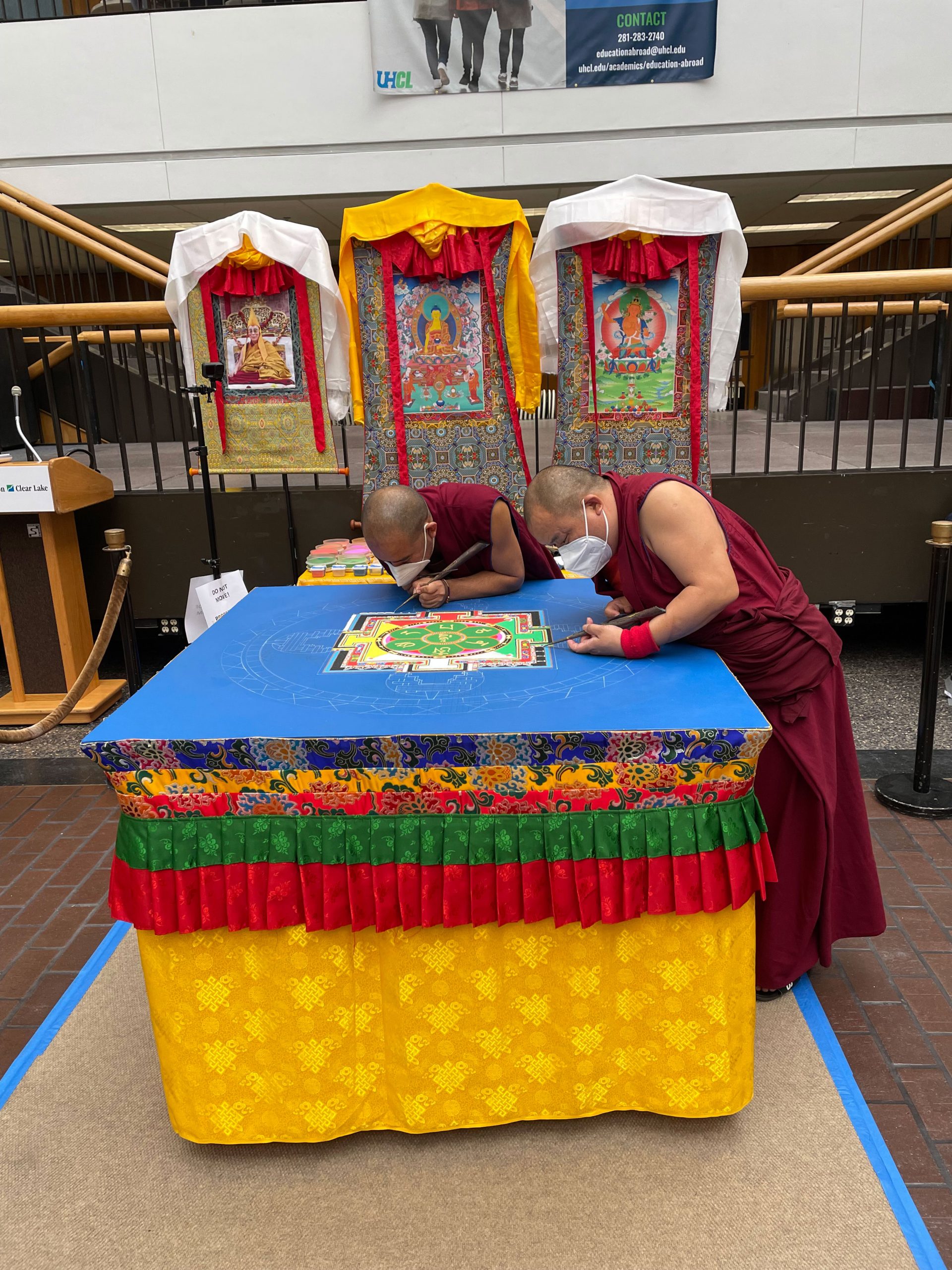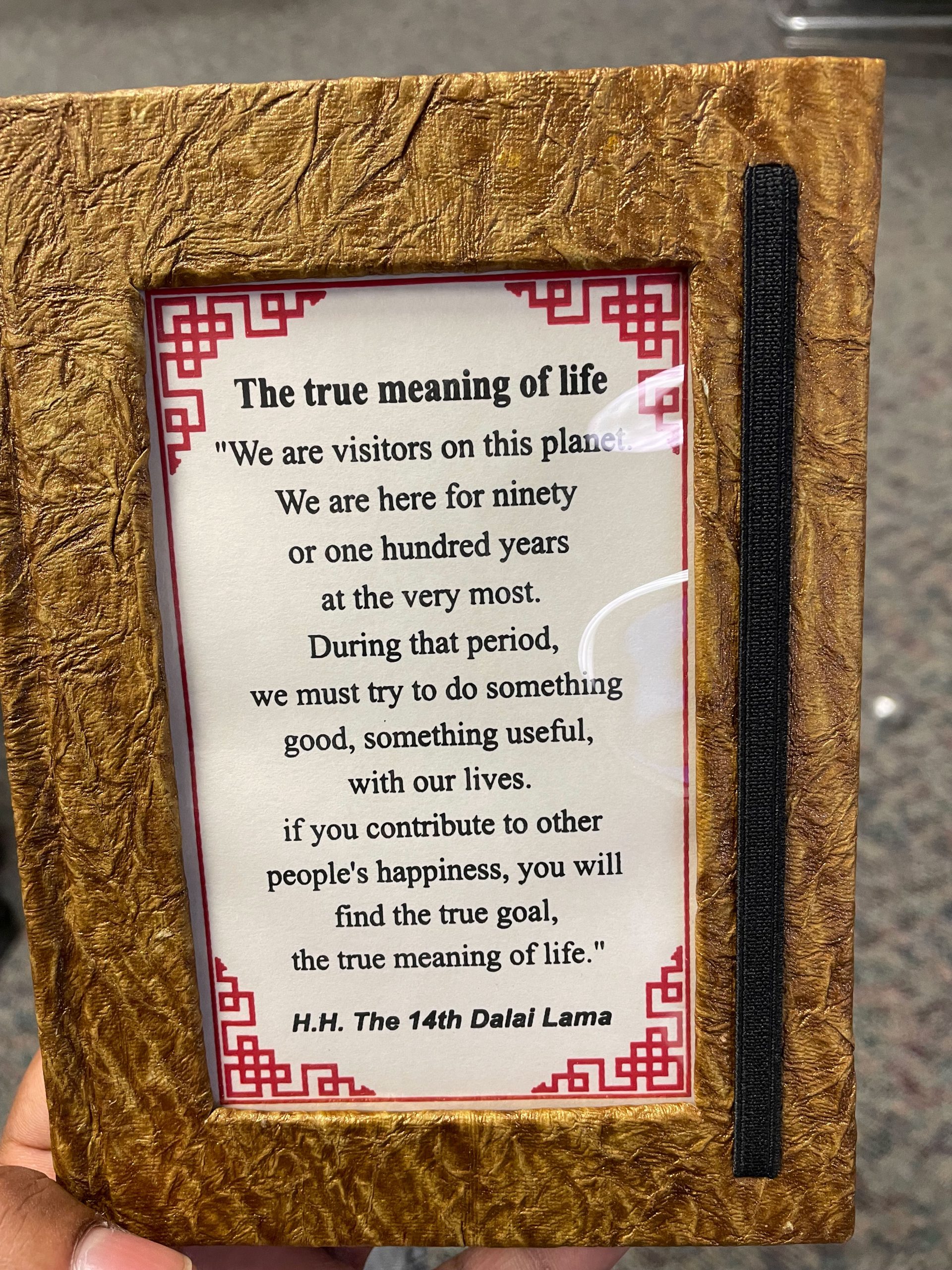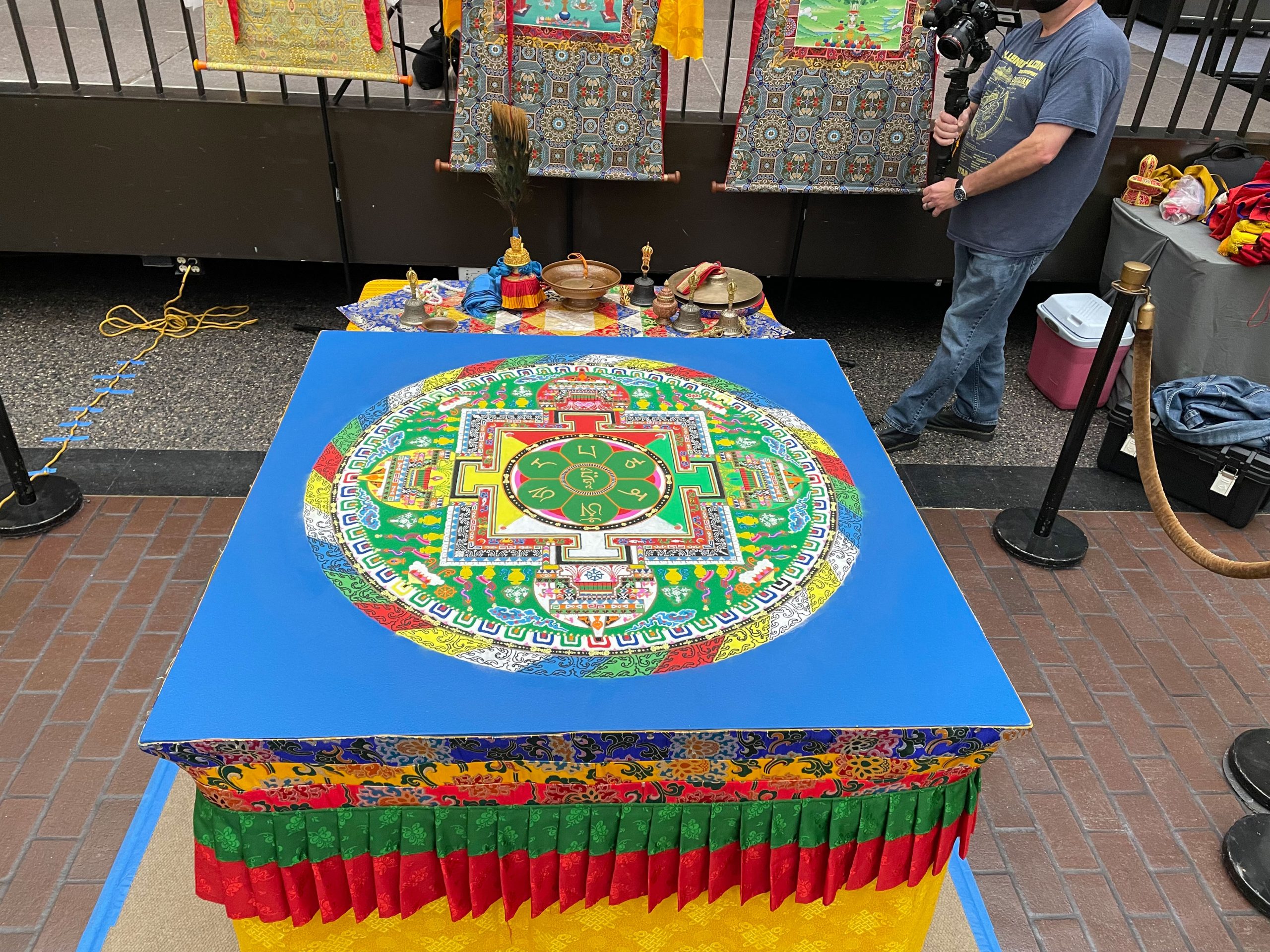SECOND THOUGHTS: Buddhist monks’ visit shows need for more monk mentality
The fall semester has flown by, with an array of events taking place. As it came to a close, there was one event that I could not ignore writing about: the Tibetan Buddhist monks’ visit to UHCL.

It’s not everyday you get to talk to monks at your university. Yet, in the world of near unlimited information and transportation, UHCL was and is a designated stop for a group of Tibetan Buddhist monks who travel around the world as part of their “Sacred Arts of Tibet Tour.” Such a visit was arranged by UHCL professor Stephen Cherry.
For a week UHCL was graced with their presence. They spoke about their lifestyle and worked on a sand mandala. A sacred Buddhist tradition, the mandala represents the world in divine form, as well as a map the human mind can follow to achieve enlightenment. After it is constructed, the mandala is dismantled, representing the ever-flowing cycle of material life.
The creation and dismantling of the sand mandala was certainly fascinating. As the mandala was dismantled, the sand that made up the mandala was put into little bags that were then given to everyone in attendance. We were told we could either sprinkle the sand around somewhere to bless a place or simply keep the blessed sand.
The monks also offered an array of Buddhist artifacts for purchase.
As a journaling advocate, I indulged myself with a phenomenal handmade journal that I look forward to filling up.
I had the pleasure of speaking to one of the monks for about an hour. I was amazed at the knowledge, wisdom and humor I experienced in such little time.
I have long found Buddhism to be a fascinating religion and philosophy. As one of the fastest-growing religions in the world, Buddhism and its teachings impact millions because of its teachings on enduring and freeing oneself from suffering and its practices meant to help one do so.
As I spoke with the kind monk, he told me what an average day is like for him and many other monks when they are in their temple. Here are just a few things he described that go on in the daily life of a monk:
- They meditate for up to six hours a day, splitting the time doing so between the morning, afternoon and night.
- They spend the day studying Buddhist philosophy, teaching it and debating its ideals with others.
- Additionally, they study knowledge and philosophy outside of Buddhist teachings to better understand the world as a whole.

What really resonated with me as he explained this was how in many ways higher education is not too far off from a temple: it’s a place where we should be able to come and find peace, learn and debate knowledge and ideals.
The monk stressed the importance of not only being mindful but also of practicing the utmost kindness possible, never hesitating to both hear a person’s perspective but also be able to understand and apologize when necessary.
He explained that the reason they meditate so long is to achieve the best clarity and judgement. Ultimately, to reach enlightenment is to reach the end of suffering, and the end of suffering begins when one ensures they judge mindfully and carefully, for conflict and violence often begins when we make decisions rooted in questionable judgement.
With all this in mind, I think the world as a whole, but especially us college students, should think more on such ideas. I am not saying we should all become monks and subscribe to the religion of Buddhism, but like any ancient philosophy, whether it be Buddhism, Stoicism or any of the monotheistic religions, we must take the good wisdom and apply it to make ourselves a much more harmonious world.
Obviously it is a bit big and what some might call dramatic for me to be speaking about changing the world, so instead I will bring things back to the college level.
This is a time in which we are learning new ideas, thinking about our careers and becoming the next generation of people that will go out into the world to define the current and coming generations. We are all here working to get our degrees and be the future servants and leaders of our wonderful communities.
Now is the best time to work on embodying more monk-like principles, then go on to apply them after we graduate. Applying such principles can increase our ability for patience and willingness to learn (things all college students need) and make us more mindful individuals who therefore treat both others and ourselves better.
In doing this, we can make an impact, if not on our community, then at least on ourselves, by showing what kindness, humility and love should be like.
The time to work on our monk mentality begins now.


